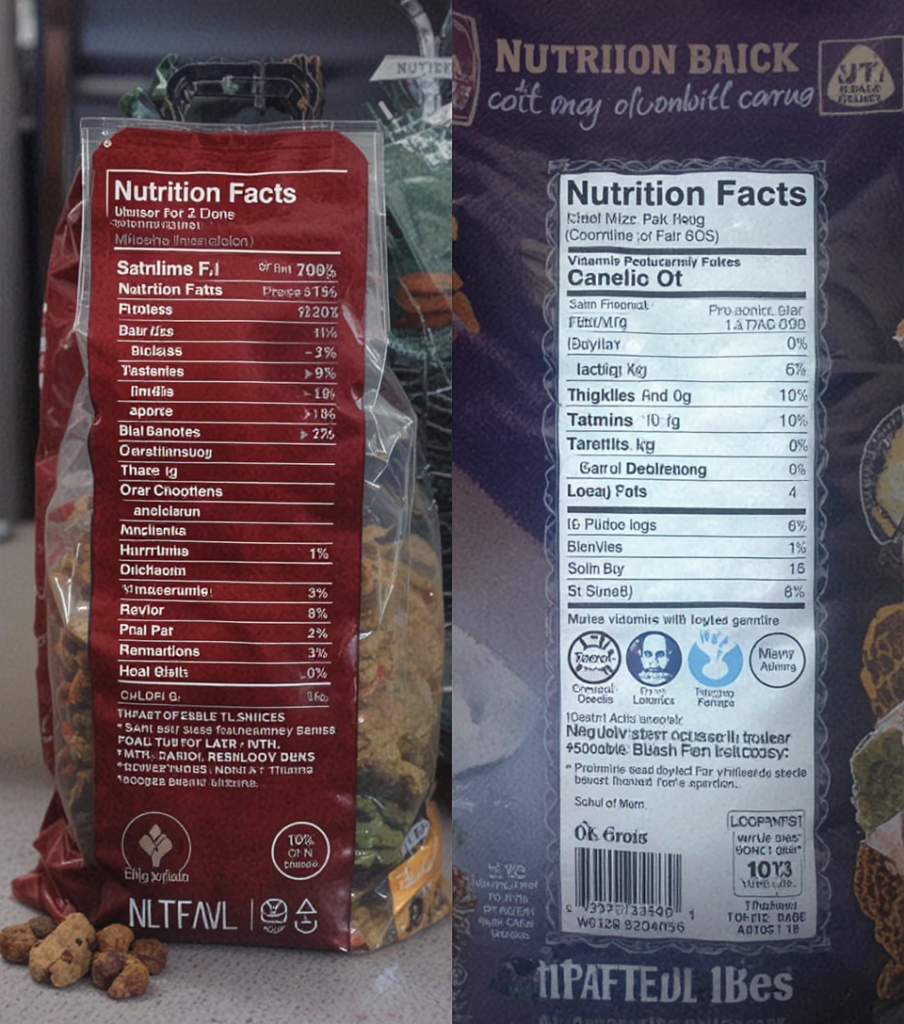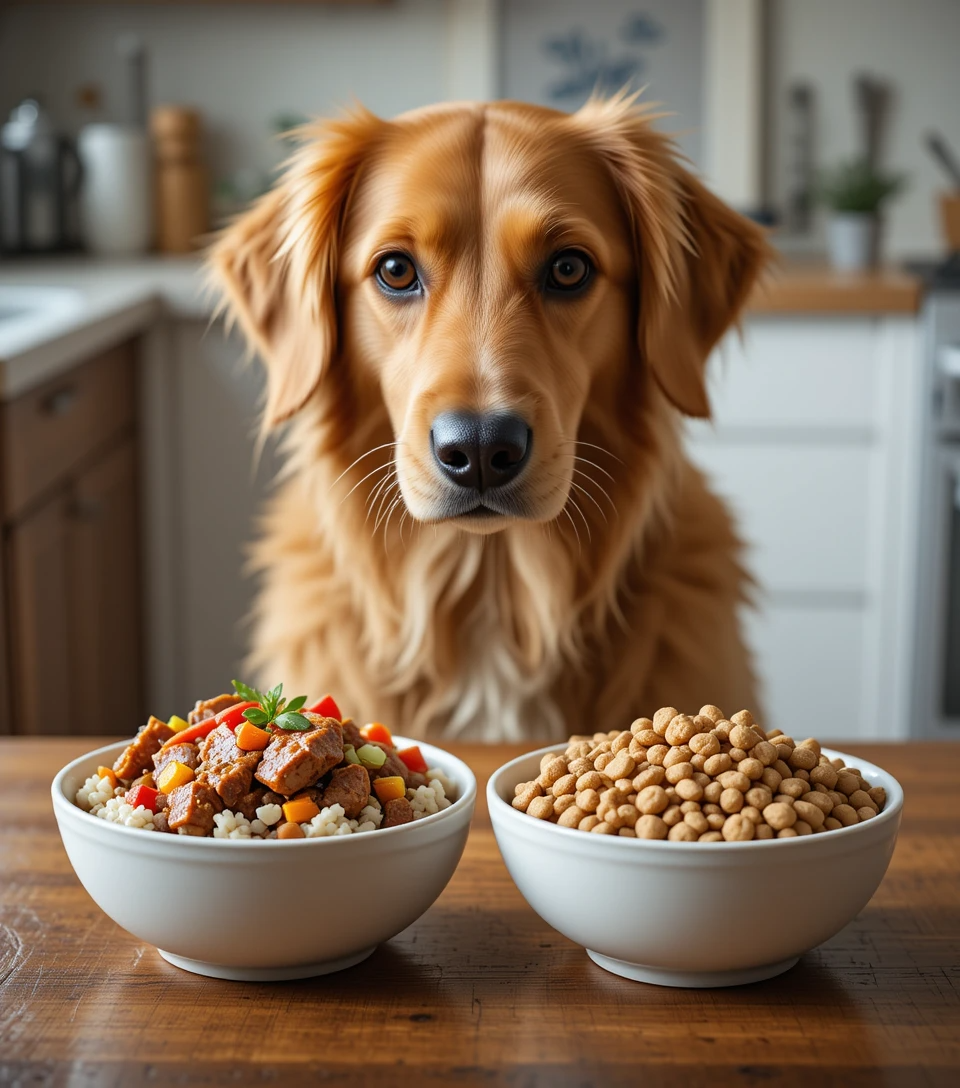Introduction
If you’ve ever stood in the pet food aisle wondering whether fresh dog food is really better than kibble, you’re not alone. As more pet owners become health-conscious and ingredient-aware, the fresh vs. kibble debate has taken center stage. Some swear by the visible improvements in their dog’s health after switching to fresh food, while others stick with the convenience and affordability of dry kibble.
So, what’s the shocking truth behind these two types of dog diets? Let’s dive into the facts, bust the myths, and uncover what’s truly best for your furry friend.
Understanding the Basics: Fresh Dog Food vs. Kibble
Fresh dog food typically consists of gently cooked, whole-food ingredients like real meat, vegetables, and grains, often delivered in pre-portioned, refrigerated packages. It’s formulated to offer a balanced diet without the heavy processing found in many dry foods.
Kibble, on the other hand, is a shelf-stable, processed form of dog food made by extruding ingredients at high temperatures. It’s convenient, affordable, and widely available — but it often includes additives, preservatives, and fillers.
Key Differences:
- Processing: Fresh food is minimally processed; kibble is cooked at high heat.
- Ingredients: Fresh food contains real, visible ingredients; kibble may include by-products and artificial flavors.
- Storage: Fresh food needs refrigeration; kibble can be stored for months.
Nutritional Value Comparison

When it comes to nutrient density, fresh dog food often has the edge. Because it’s not subjected to extreme heat, it retains more natural vitamins, amino acids, and minerals — especially from animal proteins and vegetables.
Kibble, while often formulated to meet AAFCO standards, may lose nutritional value during production. To compensate, synthetic vitamins and nutrients are added post-processing, which can be harder for some dogs to digest.
Fresh Dog Food Wins On:
- Bioavailability of nutrients
- Higher moisture content for hydration
- Quality of protein sources
Digestibility and Canine Health
One of the first changes pet parents notice after switching to fresh food is improved digestion. Dogs on fresh diets often experience:
- Firmer, smaller stools
- Reduced gas
- Fewer upset stomach episodes
The high-quality ingredients in fresh food support healthy gut flora, boost immune function, and can even improve skin, coat, and energy levels.
In contrast, some dogs may struggle with kibble due to lower digestibility, leading to bloating, excessive stool, or flatulence — especially in breeds with sensitive digestive systems.
Risks and Concerns with Kibble
While kibble offers unmatched convenience and affordability, it also comes with concerns that may surprise many dog owners:
- High-temperature processing can destroy delicate nutrients.
- Fillers and by-products, such as corn gluten meal or meat meals, are commonly used to bulk up recipes cheaply.
- Preservatives like BHA and BHT, though FDA-approved, are controversial.
- Allergens such as wheat, soy, or artificial colors can trigger sensitivities.
Over time, these factors can contribute to chronic inflammation, digestive disorders, or allergic reactions in some dogs.
Benefits and Limitations of Fresh Dog Food
Benefits:
- Made with whole-food, human-grade ingredients
- Customizable to your dog’s breed, weight, and activity level
- Easier to trace sources of food-related allergies or sensitivities
Limitations:
- Shorter shelf life; requires refrigeration or freezing
- Typically more expensive than kibble
- May not be suitable for all dogs (e.g., those with special dietary needs without vet supervision)
What Veterinarians Say

Veterinary nutritionists generally agree that both kibble and fresh food can be healthy — if they meet complete and balanced nutritional requirements. However, many vets favor fresh food in certain cases:
- Dogs with food allergies
- Dogs with weight issues or metabolic problems
- Picky eaters who refuse dry food
That said, vets caution against homemade diets unless carefully formulated with professional guidance, as nutritional imbalances can be harmful.
Real-Life Results: What Dog Owners Report
Many dog owners who’ve made the switch to fresh food report improvements such as:
- Shinier coats
- Less shedding
- Better breath
- Increased energy and alertness
- Fewer vet visits for digestive complaints
While not every dog will react the same, the trend shows a growing preference for diets that mirror what dogs might eat in the wild: fresh, clean, and nutrient-rich meals.
Transitioning from Kibble to Fresh Food Safely
To avoid upsetting your dog’s stomach, a gradual transition is key:
- Start by replacing 25% of your dog’s kibble with fresh food.
- Increase the ratio every 2–3 days.
- Watch for signs of digestive distress (diarrhea, vomiting, etc.)
Always monitor your dog closely and consult a vet if you’re unsure.
Cost vs. Value: Is Fresh Worth It?
While fresh dog food is undeniably more expensive upfront, many owners see it as a long-term investment in their dog’s health. Fewer health issues mean fewer vet bills, less medication, and improved quality of life.
Average Costs:
- Kibble: $1–$3/day (depending on brand/size)
- Fresh food: $3–$8/day (based on portion and provider)
For some households, combining both (a hybrid diet) is a practical compromise.
Final Verdict: Which One Is Right for Your Dog?
There’s no one-size-fits-all answer. The best food for your dog depends on their age, breed, activity level, health conditions, and your lifestyle.
What’s clear is this: fresh dog food offers noticeable benefits in digestibility, ingredient quality, and overall health. If you can afford it and your dog thrives on it, the switch may be well worth it.
Frequently Asked Questions (FAQs)
1. Is fresh dog food really healthier than kibble?
Yes, in many cases. Fresh food often uses higher-quality, minimally processed ingredients that are easier for dogs to digest and absorb.
2. Can I mix fresh food with kibble for my dog?
Absolutely. Many pet owners combine both to balance nutrition, cost, and convenience.
3. Why is kibble still so popular if fresh food is better?
Kibble is affordable, easy to store, and widely available. For many, it’s a practical option despite its drawbacks.
4. How do I know if my dog needs a fresh food diet?
Signs like itchy skin, chronic digestive issues, or lack of energy could indicate your dog may benefit from a fresher diet.
5. Are there any risks to feeding only fresh dog food?
Only if the diet is unbalanced. Choose vet-approved fresh food brands or work with a pet nutritionist.
6. What should I look for in high-quality fresh dog food?
Whole ingredients, no fillers or preservatives, and AAFCO-compliant nutritional profiles.
7. How can I safely switch from kibble to fresh food?
Gradually mix fresh food with kibble over 7–10 days, increasing the fresh portion daily.
8. Is homemade dog food the same as commercial fresh food?
Not always. Homemade meals can lack essential nutrients unless carefully formulated.
9. Does fresh food help with allergies or sensitive stomachs?
Yes, many dogs show improvement on limited-ingredient, fresh diets that avoid common allergens.
10. How expensive is fresh dog food compared to kibble?
It can cost 2–3 times more, but many owners believe the long-term health benefits justify the expense.

